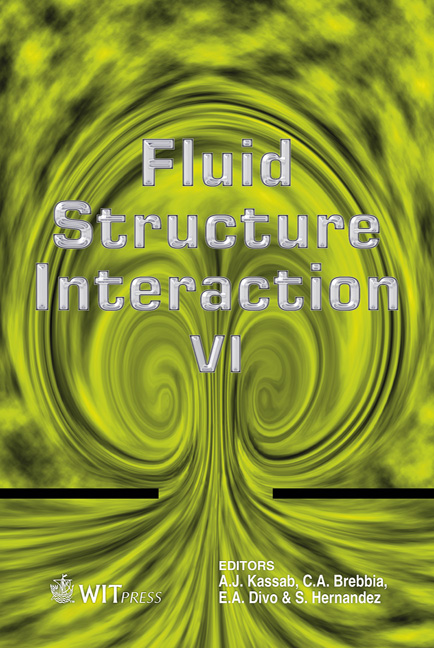Fluid-structure Interactions Of Fast Photomechanical Liquid Crystal Elastomers Driven By Light
Price
Free (open access)
Transaction
Volume
115
Pages
13
Page Range
89 - 101
Published
2011
Size
3,169 kb
Paper DOI
10.2495/FSI110091
Copyright
WIT Press
Author(s)
J. Bin, W. S. Oates & M. Y. Hussaini
Abstract
A new class of photomechanical liquid crystal elastomers (LCE) has emerged, which generate large bending deformation and fast response times that scale with the resonance of the elastomer films. These films are classified as glassy elastomers (modulus ~1GPa) and are doped with photoresponsive azobenzene liquid crystals to provide novel light induced deformation. These materials are promising for developing propulsions systems for insect size aircraft and microfluidic devices, for example. The photomechanical efficiency of these materials in a fluid medium is of high interest to understand the performance attributes of this class of smart materials. Here, a numerical study is presented that describes the photomechanical structural dynamic behaviour in a fluid medium. We simulate the oscillation of photomechanical cantilevers excited by light while simultaneously modeling the effect of the surrounding fluid at different ambient pressures. The photoelastomer structure is modeled as a thin plate and coupled with photomechanical constitutive relations to compute the transverse displacement. For the fluid, three dimensional unsteady incompressible Navier-Stokes equations using the arbitrary Lagrangian Eulerian (ALE) form are used to consider dynamic mesh movement on a local mesh and boundary conditions on the elastomer material interface. The fluid equations are discretized using a conventional finite volume method (FVM) on a structured curvilinear coordinate system. Numerical examples are given which provide new insight into photomechanical material efficiencies in a fluid medium as a function of ambient pressure. Keywords: liquid crystal elastomer, azobenzene LCN, arbitrary Lagrangian- Eulerian, artificial compressibility, fluid-structure interaction.
Keywords
liquid crystal elastomer, azobenzene LCN, arbitrary Lagrangian- Eulerian, artificial compressibility, fluid-structure interaction





